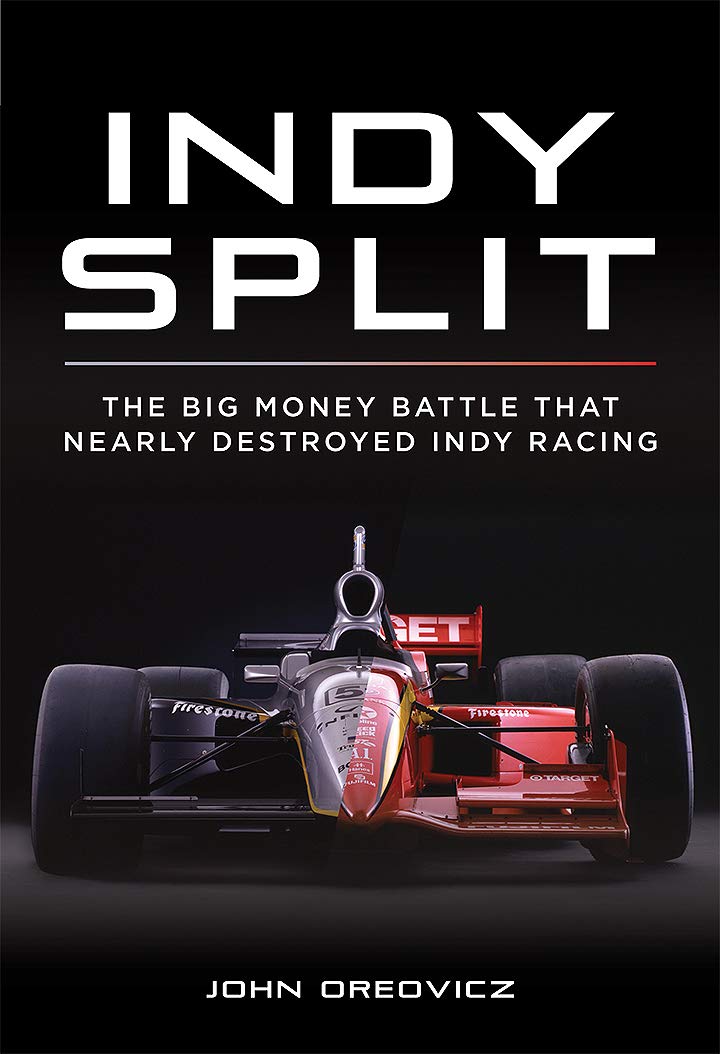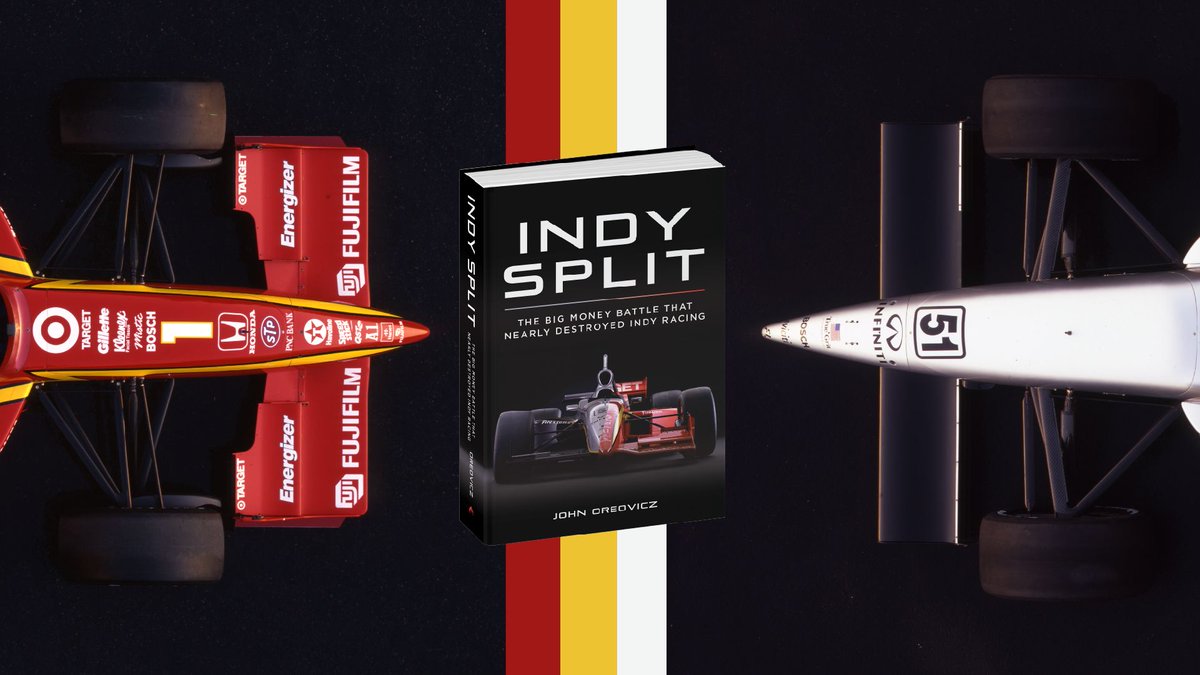New Book: Indy Split – The battle that nearly destroyed IndyCar racing
Indy Split is a fascinating, authoritative and overdue account of the big money battle that nearly destroyed the sport of Indy car racing.
In the new book, long-time motorsports reporter John Oreovicz dives deep into the divisive battle between CART and the Indy Racing League. With insightful reporting, Oreovicz recounts the political infighting within the industry which climaxed with a 12-year “Split” from 1996 to 2007 between competing forms of Indy car racing and prevented the sport from achieving its potential. Due out in May, Preorder the Book Here
The book traces the roots of Indy car racing’s dysfunction, which began in 1945 when Tony Hulman rescued the Indianapolis Motor Speedway from potential redevelopment. Over the next 75 years, the Hulman-George family used the stature of the Speedway to carve out a powerful position in American auto racing that sometimes resulted in conflict with Indy car competitors. A volatile period in the late 1970s sparked the formation of Championship Auto Racing Teams (CART), and tensions ramped up even more when Hulman’s grandson, Tony George, assumed power in 1990.

In unprecedented detail, Indy Split uncovers how the Split forced Indy car fans, sponsors, broadcasters and participants to choose sides. The book brings to light the confusion and animosity which caused unnecessary damage to the sport, and covers how negotiations driven by legendary racer Mario Andretti and actor/racer Paul Newman ended the Split in 2008, only to have George to walk away less than three years later. The long struggle for stability was finally resolved in 2020 when Roger Penske acquired IMS and the IndyCar Series, securing a bright future for the Speedway, the Indy 500, and the sport.
Longtime motorsports reporter John Oreovicz began attending the Indianapolis 500 as a teenager in the late ‘70s, allowing him to witness the sport’s growth as an avid fan before documenting its decline as a journalist. With a foreword by Motorsport Hall of Fame inductee Robin Miller, arguably Indy car racing’s most vocal advocate, this is the real story of The Split from one of the sport’s most respected voices.
Review
“The split tells such a deep story about how important it is to have everything together. It’s like a race car―there’s not just one thing that makes it perform. A whole lot of things make the package. When the series is strong, it’s got viability because of Indy, and Indy is strong because the series is strong. They need one another.” –Mario Andretti
I wasn’t aware of the politics until I walked into the CART paddock. Obviously, the thing that was missing was the Indy 500, to have the last piece of pie. We didn’t have that, and I didn’t realize it until I went to Indianapolis in 2002 what it would have meant to the series. To have the CART series, as it was, with the Indianapolis 500, would have been phenomenal.
Dario FranchittiBelieve me, I knew what the split was all about. I knew how it would fragment everything. Going the IRL route extended my career by another three or four years, and it worked out good for me. A lot of people got hurt in those cars, and it was kind of nerve-wracking for me at my age. But I had this intense desire to win Indy again. So I did it. Did I do it with a big smile on my face? I did not.
Arie Luyendyk
Coming together was something that had to be done. Everybody knew that if we weren’t careful, we would be two factions who were like two bald men arguing over a comb. No sport can withstand a split, a strike, a work stoppage―whatever you want to call it. Indy car racing was a Harvard Business Review case study of how to watch ice cream melt on your plate.
Chip Ganassi
I wish Roger Penske had bought the Indianapolis Motor Speedway in 1994…it’s the best thing that could have happened to the Speedway and the IndyCar Series. I think the Hulman-George family had taken it as far as they could, and I expect Roger will do a terrific job. I think he will do wonderful things and put zest and life back into the property and the Indianapolis 500. –Andrew Craig
From the Back Cover
Tradition, technology, and personal bravery combined to make the Indianapolis 500 one of the world’s most famous sporting events. However, political infighting within the industry–which climaxed with a 12-year “Split” from 1996 to 2007 between competing forms of Indy car racing–prevented the sport from achieving its potential. The Split seriously tarnished the reputation of the Indianapolis 500 and allowed NASCAR to become America’s most popular form of motorsport.
But Indy car racing’s dysfunction didn’t originate in 1996. The story begins in 1945, when a businessman from Terre Haute, Indiana named Tony Hulman rescued the Indianapolis Motor Speedway from potential redevelopment. Over the next 75 years, the Hulman-George family used the stature of the Speedway to carve out a powerful position in American auto racing. Stewardship of the IMS often brought the family into conflict with Indy car competitors. A volatile period in the late 1970s resulted in the formation of Championship Auto Racing Teams (CART), and tensions ramped up even more when Hulman’s grandson, Tony George, assumed power in 1990.
The Split forced Indy car fans, sponsors, broadcasters and participants to choose sides. It created confusion and animosity and caused tremendous damage to the sport. With negotiations driven by legendary racer Mario Andretti and actor/racer Paul Newman, The Split was finally resolved in 2008, only for George to walk away less than three years later from the role he so desperately coveted. The long struggle for stability and leadership was finally resolved in 2020 when Roger Penske acquired IMS and the IndyCar Series.
